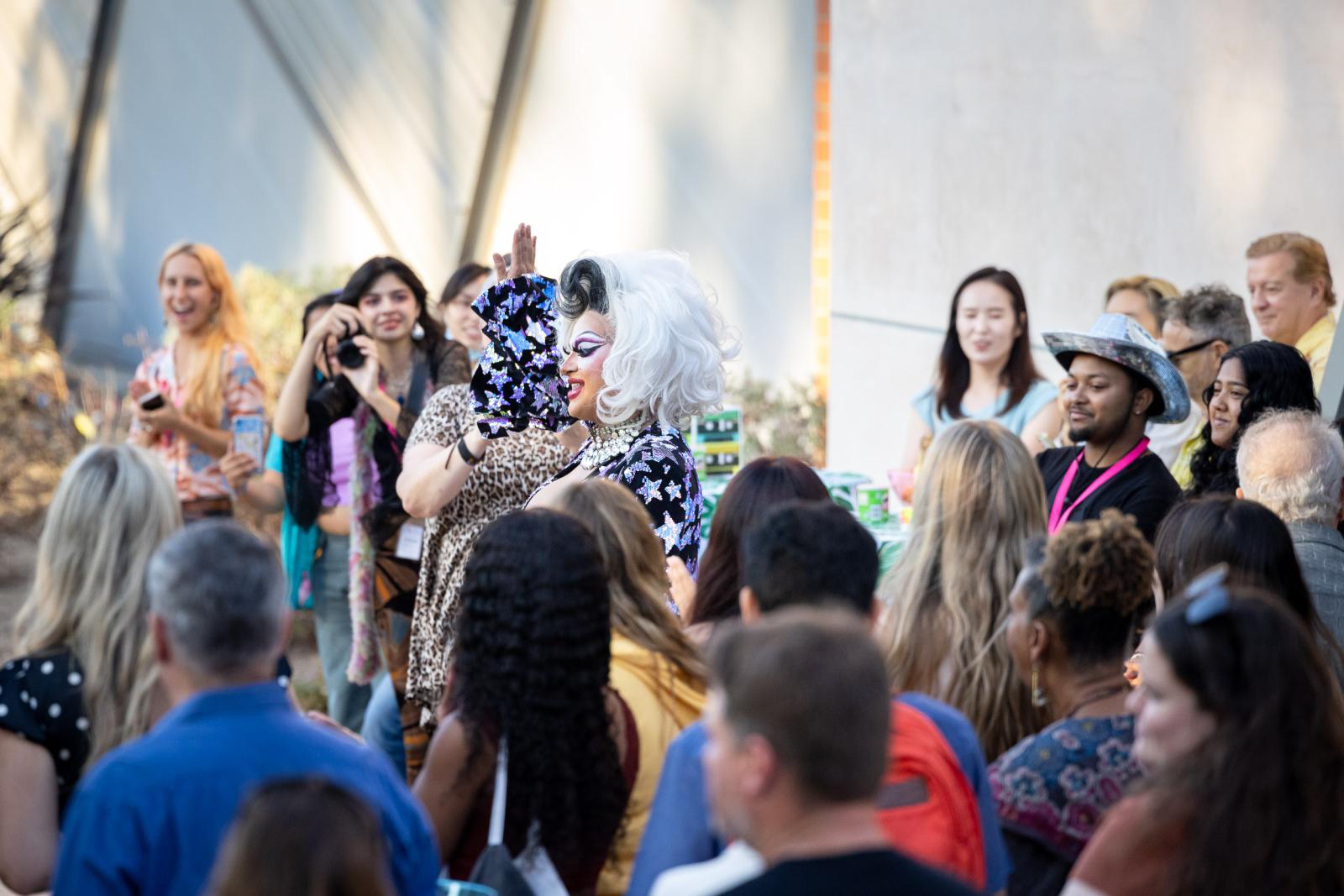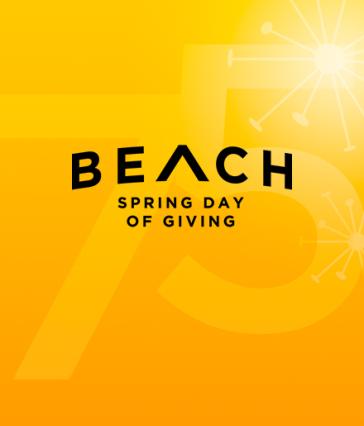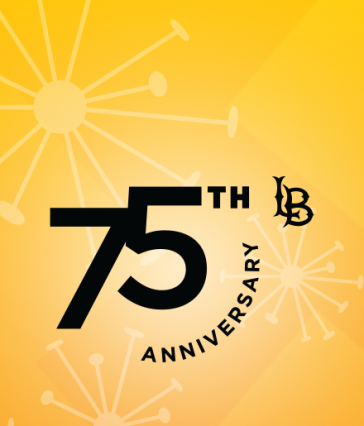Current events inspire CSULB’s Kleefeld Contemporary Art Museum to explore drag’s history

Earlier this year, Paul Baker Prindle, director of CSULB’s Carolyn Campagna Kleefeld Contemporary Art Museum, faced an unexpected opening in the museum schedule.
Reflecting on the overwhelmingly positive reaction to a previous exhibition, a collection of photographs by Black artist Clifford Prince King, he decided to present a historical show on a subject that’s been in the news – drag.
“We heard a lot of feedback that students were hungry for content, not only about Black American life, but about queer American life, LGBT life. We also noted that there were some gaps in students’ knowledge of LGBT history in America. And then also, as we were thinking about this, there were a ton of anti-drag laws, anti-trans laws being considered.”
For “Drag Show” – on view through Dec. 15 – Prindle wants visitors to consider a time period and place different from today, specifically the East Side of New York City during the 1980s and ‘90s.
“I wanted to give an example of how artistic communities – and specifically this East Village, New York, community – responded to the AIDS epidemic and help our students become more familiar with additional ways we can deal with shared trauma.

“For people who are interested, (this exhibition) is a great opportunity to learn inter-generationally and learn some additional strategies for the troubles we’re going through today.”
The exhibition consists of photographs, drawings, paintings and multimedia that capture a moment in time when the Pyramid Club – a gay, drag and punk nightclub – and Wigstock – an annual outdoor drag festival – were popular draws. Artists include Nan Goldin, Mark Morrisroe, Jack Pierson, Tom Rubnitz, Linda Simpson, Tabboo! (aka Stephen Tashjian) and David Yarritu.
Many of the works depict the day-to-day lives of drag performers. There’s a glitzy stage by Pierson made of Mylar, painted wood and Christmas lights in a corner of the gallery. And a case displays some DIY magazines from the era, particularly My Comrade.

“The artists (here) really invented this sort of diaristic documenting of one’s everyday life, and that is most certainly the foundation of Instagram and Facebook,” Prindle said. “I think the exhibition is truthful, but it’s not a particularly political exhibition. Everyone living today knows that there’s a lot of political division about these issues. I’m not really interested in talking about that. I’m more interested in putting factual data in front of people and letting them deal with it themselves.”
“Drag Show” is intended for CSULB students, faculty and staff, but also for the larger Long Beach community. On Sept. 14, the museum hosted a free opening reception, featuring colorful drag performances by Jewels Long Beach, Big Dee and Ava Stone. The event was deejayed by Beach students from 22 West Media, and attendees enjoyed collage activities inspired by the art of Pau S. Pescador. Hula hoops and lawn games provided fun for a variety of ages.

“The exhibition acknowledges that we live in a city that’s incredibly diverse, and includes a remarkably large LGBT population,” Prindle said. “In a university with so many LGBT allies and students, connecting them with an LGBT population that has played a really important role in keeping Long Beach dynamic, welcoming and inclusive – I think that’s a really important thing for our university offer, to help the city that hosts us, understanding that we have shared interests, and we care about each other, and we want everyone to feel welcome here.”
Prindle noted that drag is a form of creative expression that has been around for centuries. “We’re pretending that drag is this new thing. We teach Shakespeare in high school – all those roles were performed by men.”
At the end of the exhibition is a memorial quilt panel made in 1992 by the CSULB Theatre Arts Department to memorialize seven members of the department’s circle who died from AIDS-related causes. The panel is now part of the National AIDS Memorial, which is a quilt that includes over 50,000 panels and more than 110,000 names of people who have died from AIDS.
Prindle hopes those who visit “Drag Show” will gain insight into a slice of American culture and art history, as well as drag as an artform and a shared activity imbued with a sense of humor.
“What’s really cool about drag – it is a very serious form of performance art, but it’s also very, very irreverent. The thing that many of the artists talk about in this show is how important humor was in the face of what was going on.
“One of the messages of the exhibition is: We can take things seriously, but also laugh and have fun, lean into fantasy, music and laughter, even in the worst of times.”


















